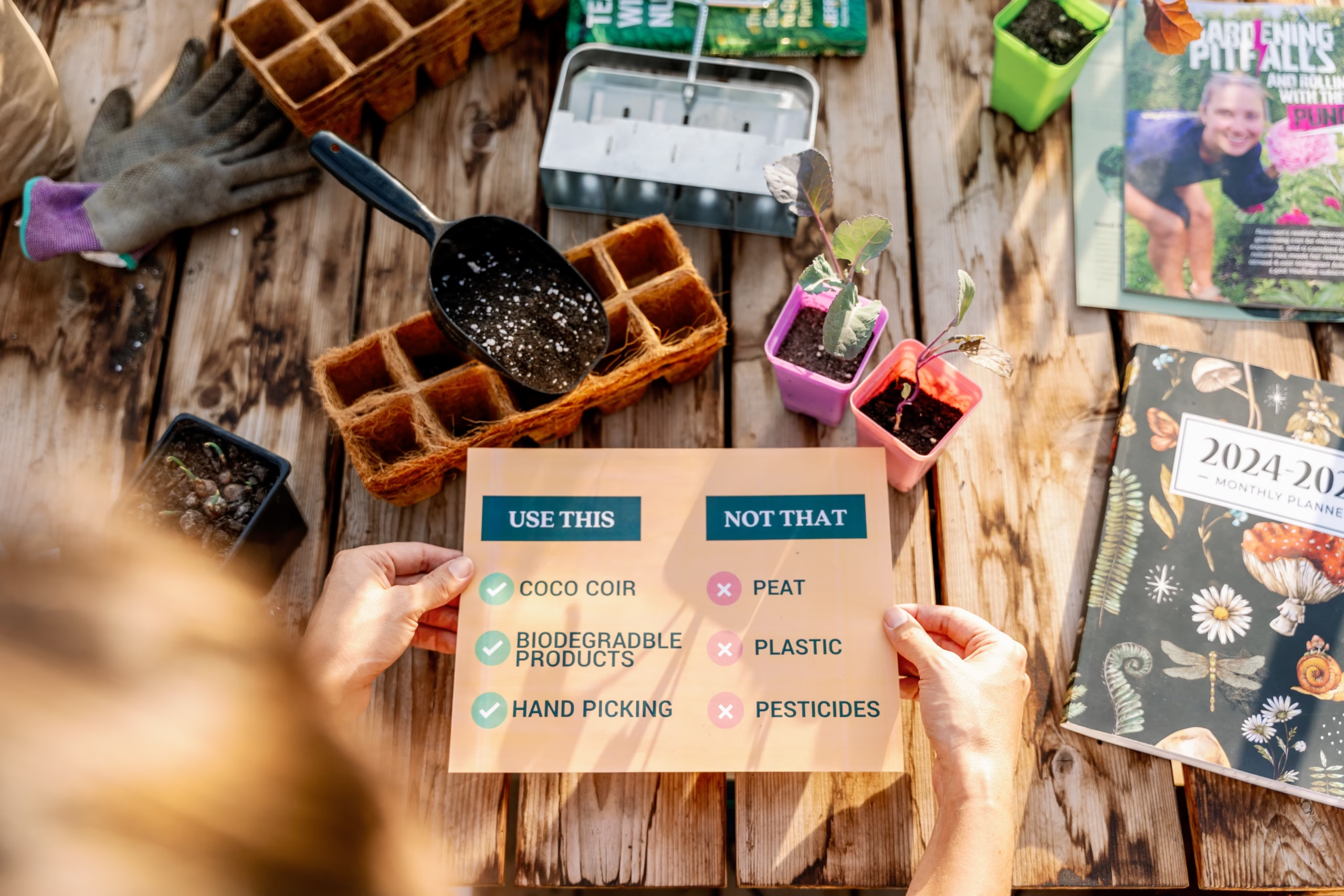
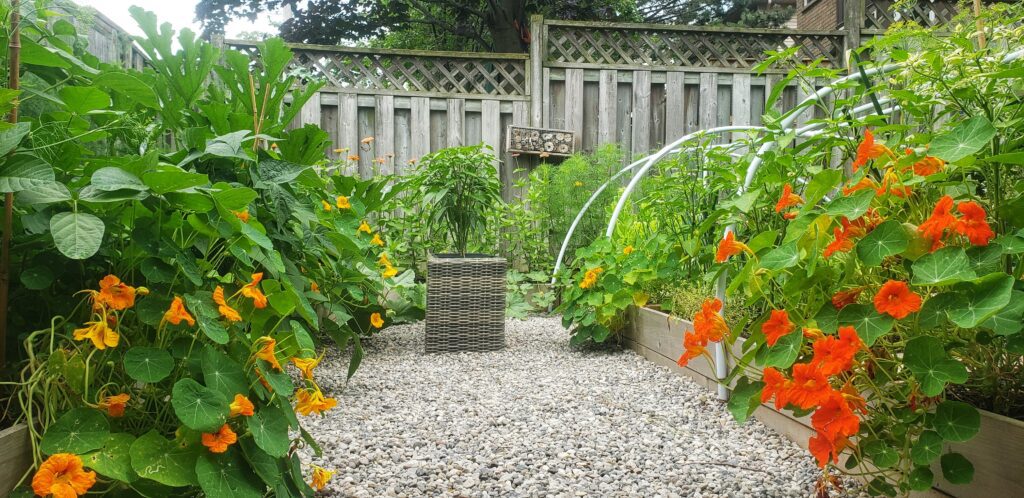
As the weather gets hotter and rain becomes more erratic, many places are seeing droughts and dry spells that are leading to an increased risk in forest fires. Or worse, many places now have a “fire season” that once didn’t exist. People have lost their homes in uncontrolled wildfires, and when a fire gets out of control, there isn’t much that can be done by you. However, knowing if you live in an area that is at risk of seasonal fires, it is possible to work towards a more fire-resistant garden.
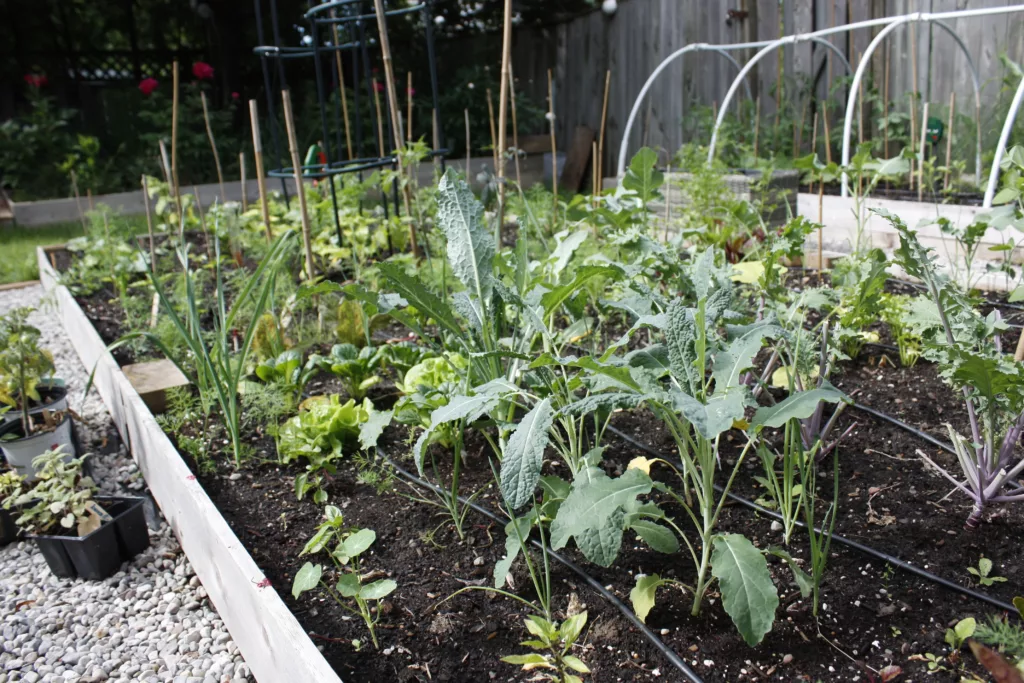
Fire-resistant gardens are a type of landscaping that uses zones and plants to help reduce the risk of a fire spreading close to your home. By using zones around your home you can help slow the spread of fire, while choosing plants that are less likely to burn quickly. Also, by following some general housekeeping tips you can help slow the spread.
No – not necessarily. There are many areas of Canada that aren’t under the threat of wildfires regularly, however provinces like British Columbia, Alberta, Northern Ontario, Quebec and parts of the Atlantic provinces have seen wildfires in recent years. The western provinces especially, have been experiencing wildfires every season.
If you live in an area that has had at least one wildfire in the last one or two seasons, it’s important for you to start working towards a fire resistant garden.
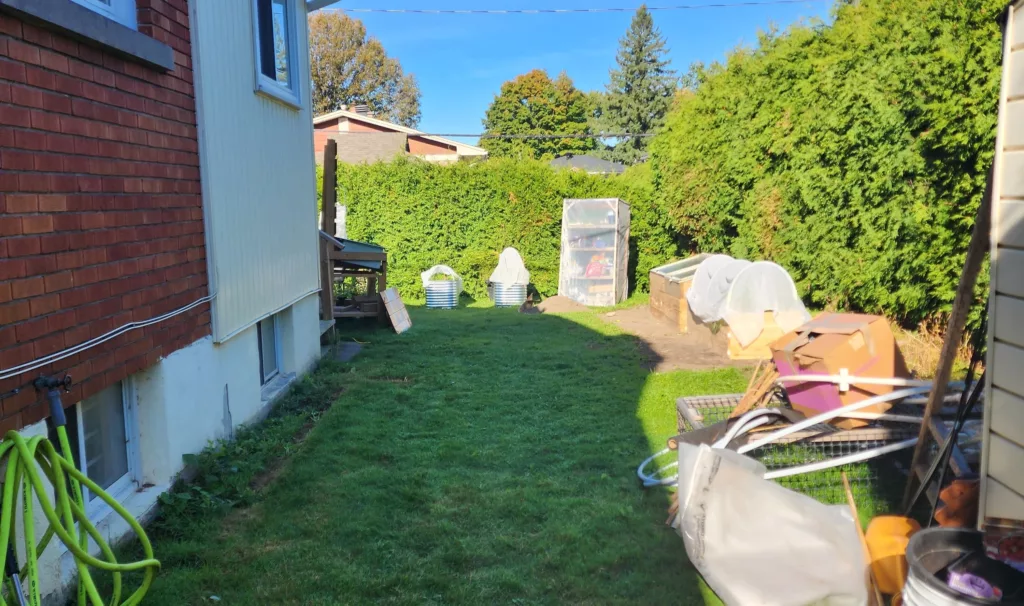
Fire Smart BC has built a great infographic on what Ignition Zones are, and where they are around your house. There are three zones, ranging from right beside your house to 30 metres from your home, that are split up so that you can landscape accordingly.
In the immediate zone (the first 5 feet away from your home) you want to make sure that you don’t have any debris that will ignite easily. This means cleaning up any old or dead shrubs and landscaping as much as possible with non-combustible products such as pavers or river stones. If you have any trees or shrubs that you never really liked anyway, remove them from this zone. Be aware that a wood deck is a combustible product, so maintain it as best as possible.
The next zone is the intermediate zone which is from 5 feet to 33 feet away from your house (on all sides). In many cities and suburbs, this is likely the remainder of your property, however if you have a larger property continue reading through to the extended zone. It’s a little difficult to move combustible items when you live in a neighbourhood, since your land is limited, however do the best you can. This includes, changing your plants and landscaping to fire-resistant types (more on that below), moving any firewood piles as far from the house as possible, and keeping any additional vehicles on non-combustible pads such as pavers or gravel. If you’re looking to build a shed, consider metal over wood. And avoid using wood mulch in your gardens and opt for non-combustible mulch such as compost. Be sure to regularly clean up any dead or dried up debris on your property.
The final zone is the extended zone which is 33 feet to 100 feet away from any part of your home. In this area is where it’s safest to keep your firewood, tools, sheds and any additional vehicles you own. Choosing a metal shed over wood, and parking your vehicles on paved stones is the best option. If your property includes evergreen trees, keeping branches cut and cleared 2m from the base is beneficial. Also, clearing any dead or dying trees and creating space between trees is important. Finally, continue to clean up all dead or dried debris from your property.
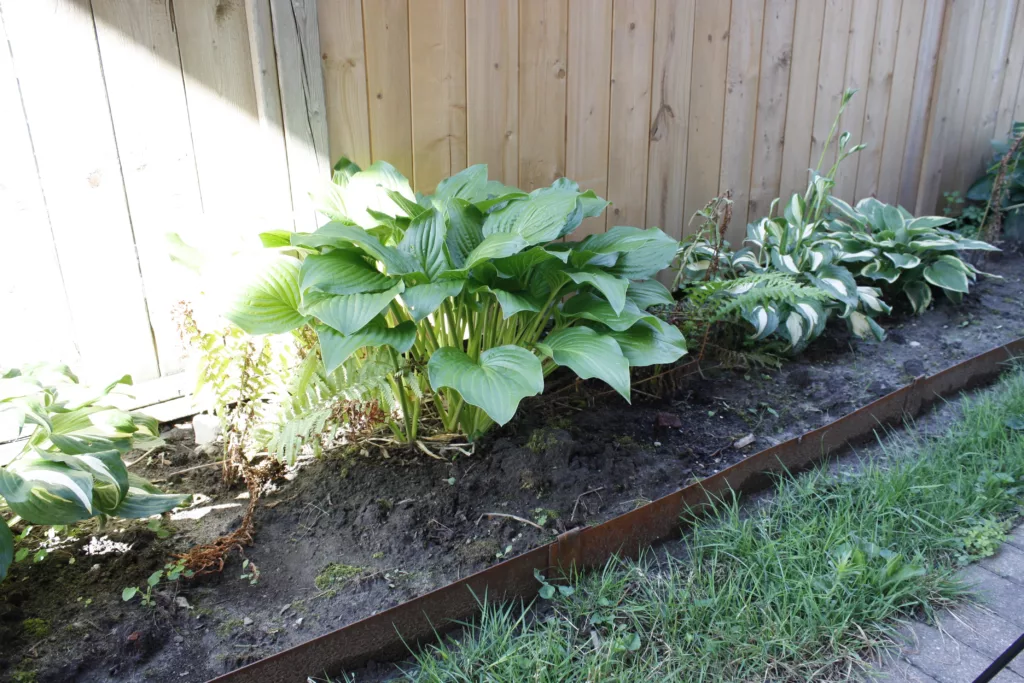
So there is no such thing as fire-proof plants, but there are features of plants that make them more fire resistant. Fire resistant plants, as they say, “don’t add fuel to the fire” – or in this case, don’t add a significant amount of fuel. According to Fire Smart BC, features of a fire-resistant plant include; moist leaves, open or fewer branching habits, grow slow, have little to no sap or resin – or the sap it does have is water-like, and grows low. Finally, when it dies back, it leaves little to no dead wood or dead material. I’ll share a list of plants further down in this article that fit the bill for being fire resistant.
In contrast, plants that are highly flammable have dry or dead material around them (such as twigs, needles and leaves), have papery bark, or the plant includes liquids that contain volatile waxes, terpenes or oils. You can determine this by smelling the leaves. If they have a strong odour when crushed, this is a sign. Also any sticky sap with an odour is an indicator as well (think many pine or other coniferous trees).
There are certain tasks you can do in the garden to help reduce the risk of fire. This includes keeping your lawn tidy from any dead branches or fallen leaves. If you have any trees on your property, make sure to regularly prune them and remove dead branches. Finally, consider using gray water from household use to water trees and plants to keep them from drying out if there is a lack of rainfall in the season.
Here are some helpful tips to help reduce your risk of fire:
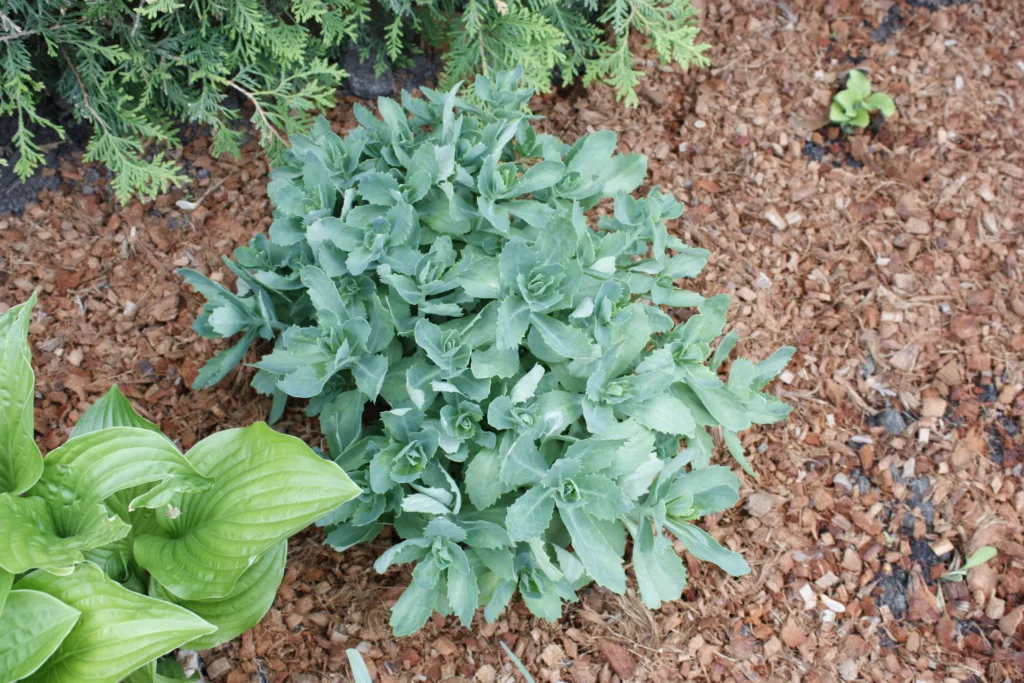
Fire Smart BC has a very extensive list of plants in an interactive chart that you can filter based on the type of plant, which zone it’s safe to plant in, its height, sun requirements and hardiness. It’s actually quite incredible. I highly recommend checking it out to help you plan your garden and landscape if you live in an area that often gets wildfires.
Some plants included on the list that are more likely to be fire-resistant and can be planted in the intermediate zone include; hostas, columbine, asters, daylily, lupine, yarrow and sedums.
This article is all about helping to build a more fire-resistant garden, and it’s important to note that a fire proof garden is NOT possible. The above tips are to help reduce the risk of fire on your property, or to lower the risk of fire for your residence. However it’s important to know that wildfires are a dangerous situation and these tips are to help reduce the risk, but won’t remove them completely. It’s important to follow the rules of your province, area or municipality if you are in a situation where a wildfire is present near your home and garden. All we can do is to help work towards slowing the spread of fires.
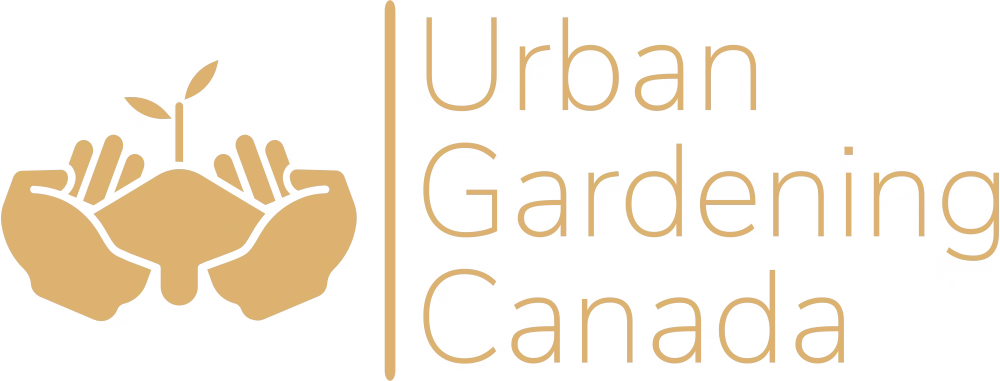
Gardening Advice for Short Season Gardeners
Privacy Policy • Terms and Conditions
© 2025 by Urban Gardening Canada